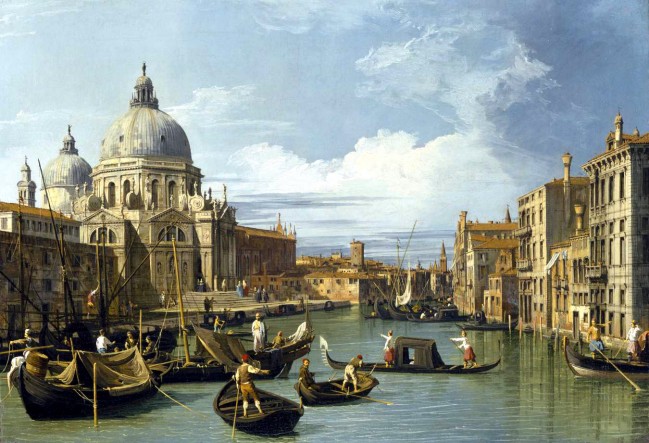Humans do learn from their mistakes. Yet, history does repeat. Nations will continue to rise, and inevitably fall. Why? Chrystia Freeland, author of “Plutocrats: The Rise of the New Global Super-Rich and the Fall of Everyone Else,” offers an insightful analysis based in part on 14th century Venice.
[div class=attrib]From the New York Times:[end-div]
IN the early 14th century, Venice was one of the richest cities in Europe. At the heart of its economy was the colleganza, a basic form of joint-stock company created to finance a single trade expedition. The brilliance of the colleganza was that it opened the economy to new entrants, allowing risk-taking entrepreneurs to share in the financial upside with the established businessmen who financed their merchant voyages.
Venice’s elites were the chief beneficiaries. Like all open economies, theirs was turbulent. Today, we think of social mobility as a good thing. But if you are on top, mobility also means competition. In 1315, when the Venetian city-state was at the height of its economic powers, the upper class acted to lock in its privileges, putting a formal stop to social mobility with the publication of the Libro d’Oro, or Book of Gold, an official register of the nobility. If you weren’t on it, you couldn’t join the ruling oligarchy.
The political shift, which had begun nearly two decades earlier, was so striking a change that the Venetians gave it a name: La Serrata, or the closure. It wasn’t long before the political Serrata became an economic one, too. Under the control of the oligarchs, Venice gradually cut off commercial opportunities for new entrants. Eventually, the colleganza was banned. The reigning elites were acting in their immediate self-interest, but in the longer term, La Serrata was the beginning of the end for them, and for Venetian prosperity more generally. By 1500, Venice’s population was smaller than it had been in 1330. In the 17th and 18th centuries, as the rest of Europe grew, the city continued to shrink.
The story of Venice’s rise and fall is told by the scholars Daron Acemoglu and James A. Robinson, in their book “Why Nations Fail: The Origins of Power, Prosperity, and Poverty,” as an illustration of their thesis that what separates successful states from failed ones is whether their governing institutions are inclusive or extractive. Extractive states are controlled by ruling elites whose objective is to extract as much wealth as they can from the rest of society. Inclusive states give everyone access to economic opportunity; often, greater inclusiveness creates more prosperity, which creates an incentive for ever greater inclusiveness.
The history of the United States can be read as one such virtuous circle. But as the story of Venice shows, virtuous circles can be broken. Elites that have prospered from inclusive systems can be tempted to pull up the ladder they climbed to the top. Eventually, their societies become extractive and their economies languish.
That was the future predicted by Karl Marx, who wrote that capitalism contained the seeds of its own destruction. And it is the danger America faces today, as the 1 percent pulls away from everyone else and pursues an economic, political and social agenda that will increase that gap even further — ultimately destroying the open system that made America rich and allowed its 1 percent to thrive in the first place.
You can see America’s creeping Serrata in the growing social and, especially, educational chasm between those at the top and everyone else. At the bottom and in the middle, American society is fraying, and the children of these struggling families are lagging the rest of the world at school.
Economists point out that the woes of the middle class are in large part a consequence of globalization and technological change. Culture may also play a role. In his recent book on the white working class, the libertarian writer Charles Murray blames the hollowed-out middle for straying from the traditional family values and old-fashioned work ethic that he says prevail among the rich (whom he castigates, but only for allowing cultural relativism to prevail).
[div class=attrib]Read the entire article after the jump.[end-div]
[div class=attrib]Image: The Grand Canal and the Church of the Salute (1730) by Canaletto. Courtesy of Museum of Fine Arts, Houston / WikiCommons.[end-div]

